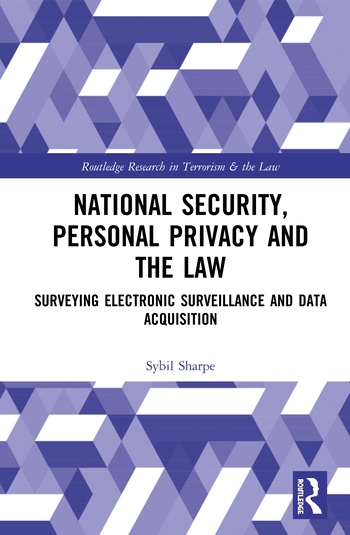The phrase “remote video guarding” is a technology mix that brings two separate industries together. The first part, remote video, refers to the monitoring industry and its increasing emphasis on using remote video to verify alarm intrusions. The second part, of course, refers to the guarding industry — the centuries-old practice of hiring human beings to protect life and property.
Remote video guarding is not just a phrase that merges two industries. It’s also a capability that is rapidly transforming and disrupting both industries at once, and it has just as much to do with the evolution of technology as the changing demographics of American society. America is walking into a demographic crisis. We are still far better off than our friends in Europe and East Asia, but we’re not worried about them, we’re worried about us.
We have a demographic crisis because our population is aging and our birth rates are rapidly declining. As recently as 2007, the U.S. fertility rate was still at 2.12, slightly above replacement level, but as of 2022, we’re down to 1.7 births per woman.
Impact of Remote Video Guarding on Guarding
The implications for the physical security industry are quite apparent. Security guarding is a relatively low-paying job typically staffed by younger people at the start of their careers. Now, not only are there fewer, young, able-bodied people to go around, they also increasingly don’t want to be security guards, given the availability of higher-paying, more comfortable alternatives that don’t involve the prospect of having to potentially confront an armed robber or active shooter.
Because of this demographic challenge, guarding executives are at their wits’ end looking for solutions. They are facing compressed margins due to rising labor costs and customers who aren’t willing to pay more, and these are leading to challenges in keeping a guard force fully staffed.
To meet this need, an industry has begun emerging known as “remote guarding.” It’s like an Uber and ChatGPT fusion for the guarding industry. The idea is that security cameras mounted with AI can automatically detect probable threats and send an alert to a security operations center (SOC). The SOC operator will then validate the threat and either notify first responders or dispatch human security guards.
Now, instead of having a guard simply man a post and walk some predictable patrol route where nothing might happen, each camera deployment serves as “eyes” that protect life and property, allowing human operators and guards to respond to threats in real time.
The guarding industry, though, is understandably reluctant to fully embrace this technology. Many senior executives are concerned that remote guarding will cannibalize their existing guarding revenues, and they are not necessarily wrong. Consider the variables in the following chart:
All revenue dollars are not created equal. Remote guarding is both significantly higher margin and higher growth than traditional guarding. There’s a reason why Tesla is worth $550 billion at $80 billion revenues while Walmart is “only” worth $400 billion at over $600 billion in annual revenues. Gross margins and growth are a much greater contributor to shareholder value than a high volume of low margin revenues.
Impact of Remote Video Guarding on Monitoring
Along with the challenges mentioned that are problematic for the guard industry, the monitoring industry is facing similar existential headwinds as well: low margins, low growth and high churn. Much of this is caused by the workforce challenges along with rising hourly pay rates. Because of these headwinds, monitoring has increasingly become an industry that resembles what economists call “perfect competition,” where services are so commoditized and competition is so numerous that long-term profitability asymptotes toward zero.
While remote video monitoring has existed for a few years now, compared to traditional alarm monitoring, it is a relatively new frontier.
The antidote for this is remote video monitoring! Remote video monitoring is akin to live content streaming in an era where everyone else is still competing on how many VHSs and DVDs they rent.
The big advantage that incumbent monitoring centers already have is the infrastructure, processes and personnel in place that can be much more easily pivoted toward video monitoring than a company that’s building such a capability from scratch.
However, even with these advantages, market share in remote video monitoring is being rapidly gobbled up by companies that are building from scratch rather than monitoring companies making a pivot with all of their inherent advantages. That’s why the dominant players in video monitoring are the likes of Stealth Monitoring, EyeQ Monitoring and Eyeforce, instead of traditional full-service and third-party monitoring centers.
Fortunately, most monitoring company executives recognize this trend and have begun looking into an expansion, if not a transition into remote guarding. Yet their execution velocity has left a lot to be desired. It seems like most monitoring companies are letting “perfect be the enemy of the good” and are bogged down by inaction while the “pure-play video” actors take more and more market share.
While remote video monitoring has existed for a few years now, compared to traditional alarm monitoring, it is a relatively new frontier. It is a blue ocean market where dealers selling video monitoring are more likely to come up against non-consumption or manned guarding as an alternative than other video monitoring providers.
Haves & the Have Nots
This new frontier is going to create winners and losers in both monitoring and guarding. In fact, the two industries will increasingly converge to compete with each other. For example, it has become apparent that a select few of the large full-service and third-party centers are building remote guarding capability.
Companies who are willing to act decisively, make mistakes and learn from them will take the lion’s share of the market. Those who end up stuck in their ways will be caught between a rock and hard place — the no man’s land between a stagnating, low margin and high churn business, and an inability to gain traction in video.








